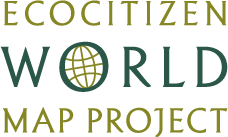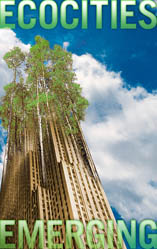ECOCITY INSIGHTS
by Jennie Moore, Director, Sustainable Development
and Environmental Stewardship, British Colombia
Institute of Technology
The International Ecocities Framework and Standards (IEFS) identifies human wellbeing and quality of life as an essential social feature. Specifically, “residents report satisfaction with their quality of life including employment, the built, natural and landscaped environment, physical and mental health, education, safety, recreation and leisure, and social belonging” (www.ecocitystandards.org).
Human wellbeing depends on access to resources sufficient to lead a dignified life (Raworth 2013). This includes access to natural resources such as clean air, water and energy, as well as nutritious food. It also includes access to social resources including education, healthcare, employment and recreation, participation in decisions that affect one’s life, and freedom from persecution for one’s religious beliefs.
Ecocities not only support wellbeing and quality of life through provision of affordable shelter and services, they also enable people to: access jobs close to where they live, breath clean air in car-free cities, and enjoy nature at their doorstep (Register 2006). This is achieved through compact design of the built environment that takes advantage of roof-tops (e.g., for parks and restaurants) and spaces below ground (e.g., for storage and shopping). Landscaped environments at grade blend with the natural environment to foster ecological connections that invite nature into the city (Register 2006).
Residents of ecocities enjoy a high quality of life regardless of their socio-economic status. This means that social services are provided based on need, not just an ability to pay.
An important measure for wellbeing is the Genuine Progress Indicator (GPI). Invented by Redefining Progress in 1995, the GPI considers changes in income distribution, volunteerism, crime, pollution and resource depletion as factors that affect quality of life (Redefining Progress 2013). This stands in contrast to Gross Domestic Product (GDP) which measures the sum of a nation’s financial transactions, but does not consider whether those contribute or detract from the wellbeing of citizens, particularly those who are most vulnerable.
References:
Raworth, Kate. 2013. Defining a Safe and Just Space for Humanity in Linda Starke, ed., State of the World 2013: Is Sustainability Still Possible? Washington DC: Island Press.
Redefining Progress. 2013. Sustainability Indicators: Genuine Progress Indicator (online resource) http://rprogress.org/sustainability_indicators/genuine_progress_indicator.htm (Accessed on November 14, 2013).
Register, Richard. 2006. Ecocities: Building Cities in Balance with Nature. Gabriola Island BC: New Society Publishers.
Register, Richard. 1987. Ecocity Berkeley: Building Cities for a Healthy Future. Berkeley Ca: North Atlantic Books.
British Colombia Institute of Technology School of Construction and the Environment is Lead Sponsor of the International Ecocity Framework and Standards Initiative




 Posted by ngrunditz
Posted by ngrunditz  It’s been a busy four months since I went into woodshed mode to help create the
It’s been a busy four months since I went into woodshed mode to help create the 



